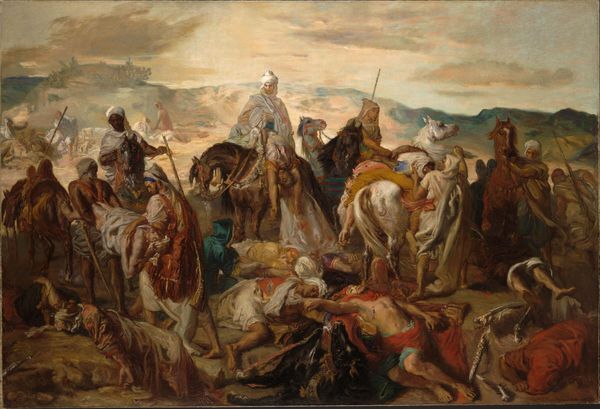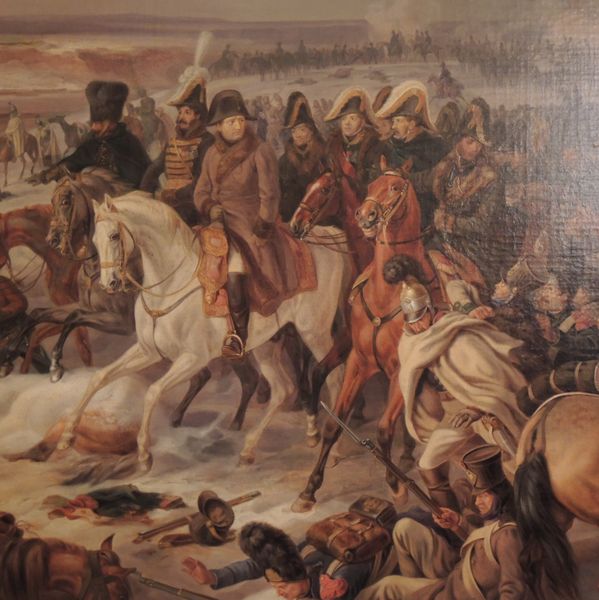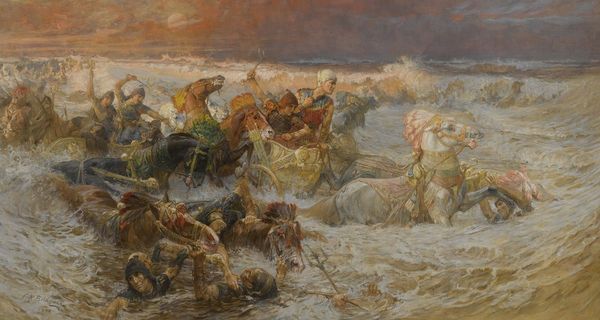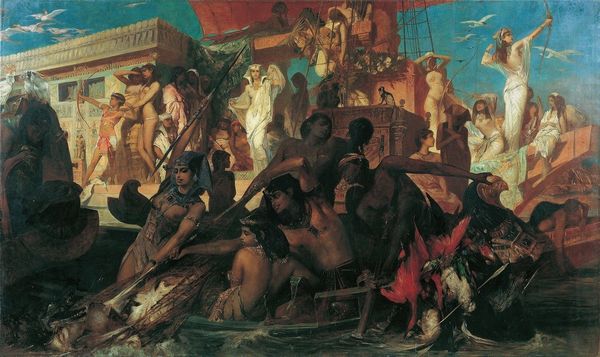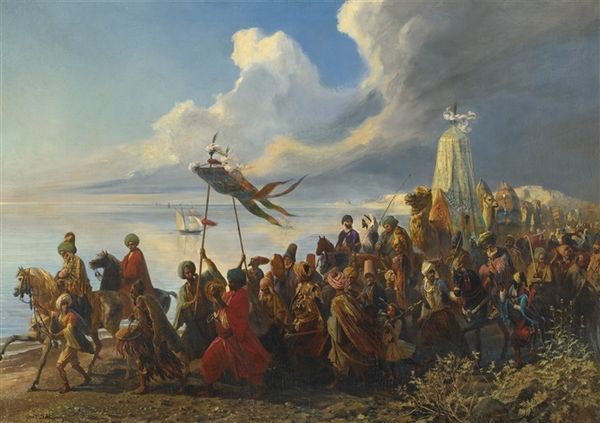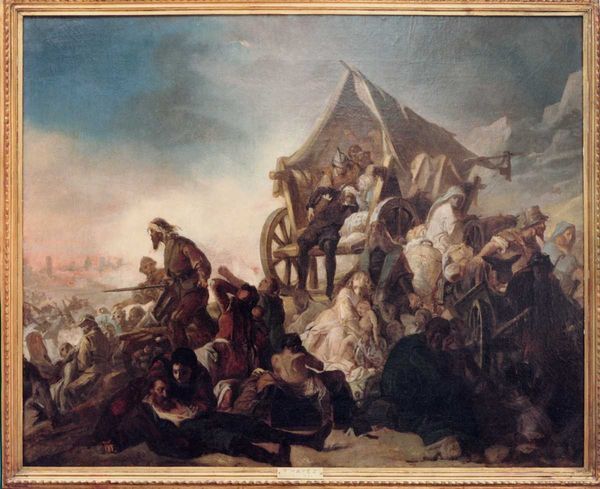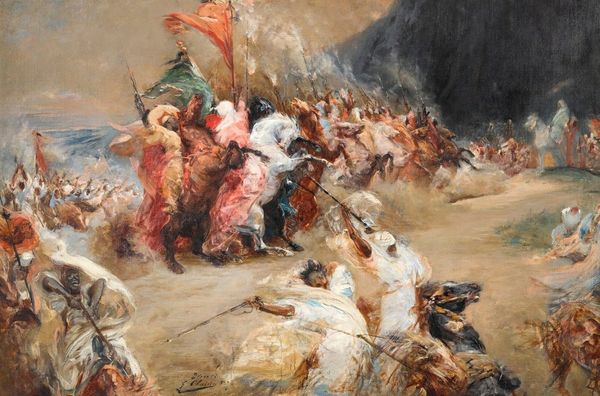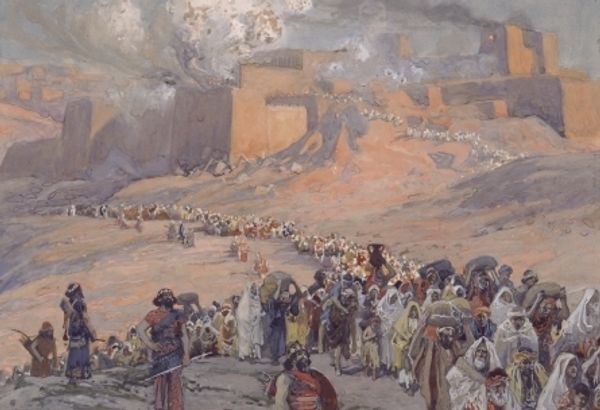
painting, oil-paint
#
narrative-art
#
painting
#
oil-paint
#
landscape
#
figuration
#
oil painting
#
romanticism
#
history-painting
Copyright: Public domain
Curator: Albrecht Adam's "Retreat of French Troops from Russia," painted in 1830, presents a grim episode of military history. What stands out to you most upon seeing it? Editor: It’s overwhelmingly bleak. The palette is subdued, dominated by cold browns and grays. You can almost feel the biting wind and the weight of defeat settling in your bones. The textures look heavy, even sluggish, mirroring the arduous journey the figures are making. Curator: Precisely. Adam captured not just a historical moment, but the very sensation of collapse. Note the body language of the figures—slumped shoulders, weary gaits. The painting serves as a symbol of the catastrophic hubris of Napoleon’s ambition, which brought immense suffering. The retreat itself, in a symbolic manner, denotes the folly of expansionism and a certain fragility to empire. Editor: I’m curious about Adam’s choice of oil paint for this subject. The thickness and layering, which creates a tangible, almost sculptural quality, speak volumes. I mean, imagine the logistics of depicting this scene—the scarcity of supplies for the troops and likely for the artist too. It highlights the resourcefulness and sheer effort involved. What sort of patronage did Adam have to execute something on this scale? Curator: Adam worked extensively for royal patrons. However, there's something in the downcast eyes, as well as postures and faces, that feels profoundly human. He avoids idealization of any of the actors within this drama, offering a study in shared anguish. Editor: A poignant study in failure on all sides. I’m struck by how Adam transforms a political and military event into a broader reflection on endurance, loss, and the cost of conflict. The materiality of paint almost makes it a memorial or a record. Curator: Agreed. "Retreat of French Troops from Russia" acts as a meditation on how visual imagery encodes enduring historical memory. Editor: I am particularly affected by how the piece connects historical events and intimate human experience through artistic method.
Comments
No comments
Be the first to comment and join the conversation on the ultimate creative platform.
